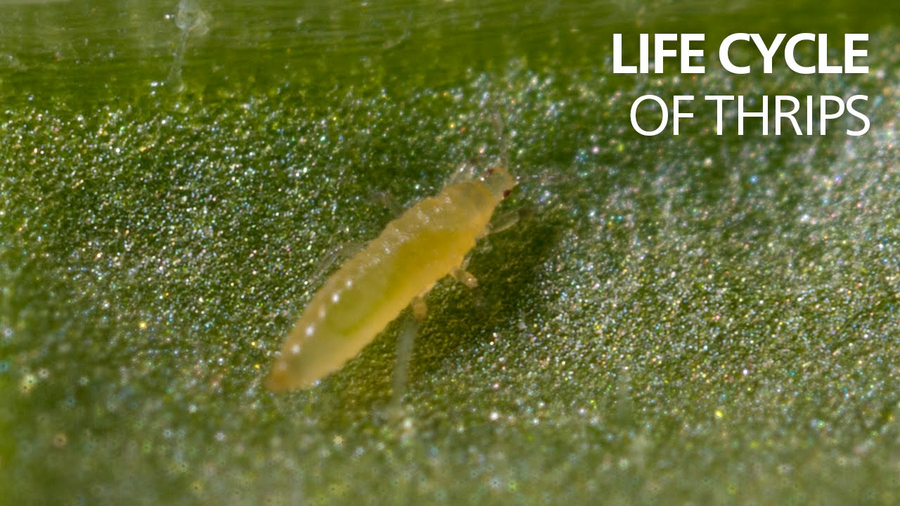General
The onion thrips (Thrips tabaci) is distributed throughout the world. It is found outdoors on many plants and particularly damaging on onions, leek, and in greenhouses on cucurbits, tomato, sweet pepper, eggplant, roses, chrysanthemum, gerbera, carnations, bulbs and many others.
Life cycle and appearance of Onion thrips
Onion thrips (Thrips tabaci) develops in six stages: egg, two larval instars, prepupa, pupa, and finally the adult insect.
The eggs of the onion thrips (Thrips tabaci) are laid in leaves, flower petals and in the soft parts of stalks. They are inserted into the plant tissue with a saw-like ovipositor. Larvae are light to yellowish green in colour, with a large head and bright red eyes. The colour of the adult depends on the food source.
Onion thrips (Thrips tabaci) usually pupate in the ground, although pupae can also be found on leaves, in flowers or in other sheltered places. The prepupal and pupal instars can be recognized by their developing wing buds. Compared with the prepupa, the pupa has longer, more developed wing buds and longer antennae that are curved back over the head. The prepupal and pupal instars do not feed and only move if disturbed.
Damage symptoms
Thrips cause damage to plants by piercing the cells of the surface tissues and sucking out their contents, causing the surrounding tissue to die. The resulting silver-grey patches on leaves and the black dots of their excreta indicate their presence in the crop. The vigour of the plant is reduced by loss of chlorophyll. When infestations become serious the leaves themselves can shrivel.
Onion thrips (Thrips tabaci) is found mostly along the main leaf veins, with most damage evident where these veins join. Fruit damage, for instance in cucumber, only occurs if the crop is heavily infested. In some countries, the onion thrips (Thrips tabaci) has been identified as an important vector of tomato spotted wilt virus.
